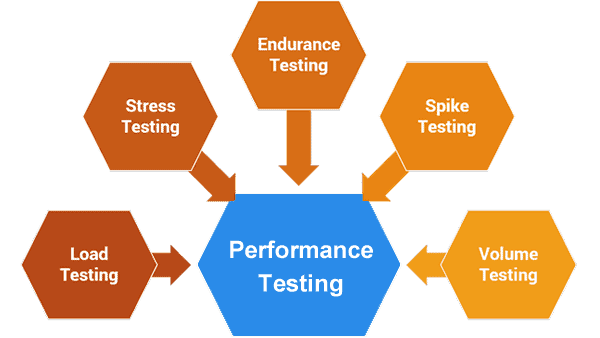There are numerous types of testing conducted while developing software. Software testing is essential because it measures your software’s stability and sustainability and ensures the software has no bugs.
Testing can be done using various methods, tools, and technologies. In the end, it helps you identify bugs or missing requirements, which can be dangerous for your software. Bug-free softwares are secure and robust, and satisfy customers.
Nowadays, every user wants the best performing system in terms of speed, capacity, network, etc. Thus, performance testing has become a critical part of system testing. This test helps the tester identify performance-related bottlenecks. If you don’t do it, your system may face a slower response rate during periods of high volume. This will result in poor user experience, and cause you to lose genuine users.
For the reasons above, you need to achieve speed, stability, and responsiveness requirements for the best user experience. Now, let’s see how to conduct performance testing.
How to Conduct Performance Testing
The steps of performance testing are not fixed. It depends on the testing team and organization. Needless to say, performance testing goals are the same throughout the board. So there are specific steps that you can follow.
Choose testing tool and environment
Before moving forward, you need to choose a testing tool that is the best fit for automation testing. Next, setup the test environment and configure the chosen tool. You need to analyze hardware and software configuration and make it the same as the production environment.
Define acceptance criteria
Here, you need to define goals and thresholds. Any test case that is fulfilled will be considered a pass. It can be done by analyzing project specifications. In the end, define benchmarks for test cases.
Define test cases
This is the most important step; you need to define each test case. Think beyond the limits and write test cases. Also, consider the edge cases while defining the scope of a test case.
Execution and analysis
Now, execute the defined test cases and monitor the output. Analyze the result and check metrics. You need to re-run the test cycle for the failed test cases to review changes in the result. Repeat the process until every case passes the acceptance criteria.
Types of Performance Testing
Now that you know how to do performance testing, let’s go further and understand the different types. By knowing the types, you can conduct the tests more accurately.

Load testing
It identifies the system’s capacity under the highest user traffic. Mainly, here, you need to identify the performance bottleneck before releasing it to the end user. It also tests for situations when a user’s request requires a lot of data processing before it can be responding to. Your system may break at this time. So, the objective is to identify such a scenario and handle it beforehand. It can be done in the continuous integration(CI) process as well. Testers can use well-known tools such as Jenkins for this.
Stress testing
In this test, the tester will put higher than expected traffic on a system so they can observe how the system works at that time. It usually checks the ability of resources like CPUs, data storage, and memories. For companies specially, it’s always good practice to do stress testing before big releases or pick hours.
Endurance testing
This is also known as soak testing. Endurance testing helps determine a system’s long-term sustainability. In it, the tester will keep increasing the system load and monitor KPIs, including memory usage and database performance. They also check for failures such as memory shortage and API server errors. In the end, based on the comparison of the matrixes of the start and the end, the tester will be able to analyze the system’s performance.
Scalability testing
The objective of scalability testing is to identify whether a system is auto-scalable or not. When user load increases, you need to make it auto-scalable so the user will have a smooth experience at any point in time. Many deployment services provide auto-scalable features based on system load.
Volume testing
Volume is connected with the database. The end goal is to check what happens when a large amount of data is populated into the database. Will it downgrade the system’s performance? If yes, then you need to resolve the issue. When you anticipate large users, you also keep their data and storage in mind.
Advantages of Performance Testing
Having reliable software is vital for the success of a company. A team can make important software deployment decisions by measuring the performance of basic software features.
There are several benefits that you get from performance testing. The primary goal is to make your customer happy; the customer’s first impression is essential. You ensure that users get needed information within a few seconds via performance testing. If users have to wait for a longer time, then they may lose interest.
Another advantage of performance testing is you can pre-scale your system based on testing results. You can measure load capacity and, thereafter, optimize your software.
Conclusion
In the SDLC, testing is a crucial phase. In that performance testing is necessary; it sets a benchmark for customer satisfaction and trust. As you know, if you fail to do performance testing, it can have a massive impact on the company. Performance testing can be done automatically using many tools available in the market. You can take advantage of themand get the best output.







